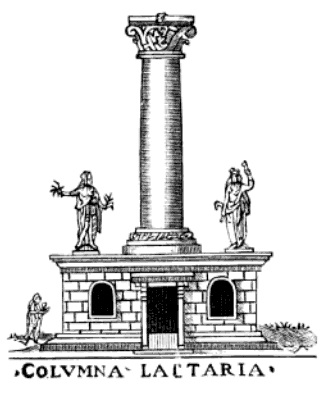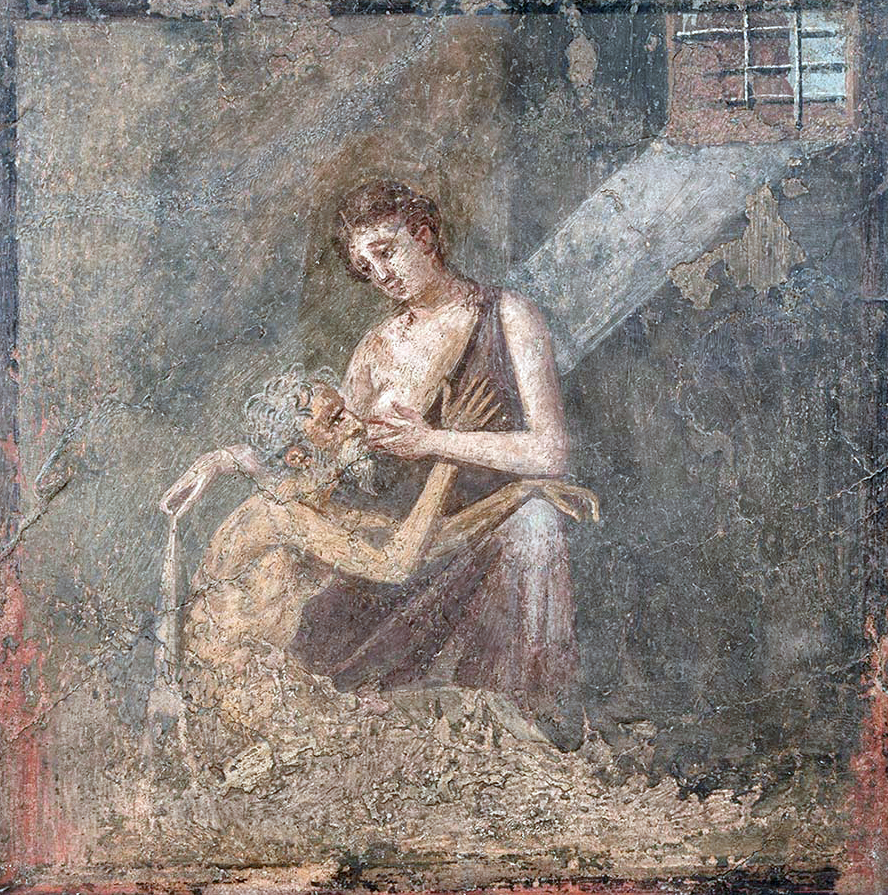Columna Lactaria on:
[Wikipedia]
[Google]
[Amazon]
 The ''Columna Lactaria'' ("Milk Column") was a landmark in
The ''Columna Lactaria'' ("Milk Column") was a landmark in  The ''Columna Lactaria'' was located close to the Temple of Pietas, which displayed a painting on the theme of '' Caritas Romana'' ("Roman Charity"), about a woman giving breastmilk to an aged parent. The column was probably destroyed by the construction of the
The ''Columna Lactaria'' was located close to the Temple of Pietas, which displayed a painting on the theme of '' Caritas Romana'' ("Roman Charity"), about a woman giving breastmilk to an aged parent. The column was probably destroyed by the construction of the
online.
Richardson, ''A New Topographical Dictionary'', p. 94, discounts the meaning of any association of the "Milk Column" with the ''Caritas Romana'' story, but see also Palmer, ''Carthage and Rome at Peace'', p. 98, note 9
online.
/ref>
 The ''Columna Lactaria'' ("Milk Column") was a landmark in
The ''Columna Lactaria'' ("Milk Column") was a landmark in ancient Rome
In modern historiography, ancient Rome refers to Roman civilisation from the founding of the city of Rome in the 8th century BC to the collapse of the Western Roman Empire in the 5th century AD. It encompasses the Roman Kingdom (753–509 B ...
in the Forum Holitorium
The Forum Holitorium ( it, Foro Olitorio; en, Vegetable-sellers' Market) is an archaeological area of Rome, Italy, on the slopes of the Capitoline Hill. It was "oddly located" outside the Porta Carmentalis in the Campus Martius, crowded between th ...
, or produce market. The Roman grammarian Festus
Festus may refer to:
People Ancient world
*Porcius Festus, Roman governor of Judea from approximately 58 to 62 AD
*Sextus Pompeius Festus (later 2nd century), Roman grammarian
*Festus (died 305), martyr along with Proculus of Pozzuoli
*Festus (h ...
says it was so called "because they would bring babies there to be fed with milk." It seems to have been a public charity where poor parents could obtain milk for their infants, or a central site for locating and hiring wet nurse
A wet nurse is a woman who breastfeeds and cares for another's child. Wet nurses are employed if the mother dies, or if she is unable or chooses not to nurse the child herself. Wet-nursed children may be known as "milk-siblings", and in some cu ...
s. It has also been interpreted as a sanctioned site of child abandonment
Child abandonment is the practice of relinquishing interests and claims over one's offspring in an illegal way, with the intent of never resuming or reasserting guardianship. The phrase is typically used to describe the physical abandonment of a ...
, where parents unable or unwilling to care for newborns could leave the child in the hope that it might be pitied and fostered (that is, given milk).
Theater of Marcellus
The Theatre of Marcellus ( la, Theatrum Marcelli, it, Teatro di Marcello) is an ancient open-air theatre in Rome, Italy, built in the closing years of the Roman Republic. At the theatre, locals and visitors alike were able to watch performances o ...
, beginning in the 40s BC. One of the neighborhoods razed for the construction of the theater was the Vicus
In Ancient Rome, the Latin term (plural ) designated a village within a rural area () or the neighbourhood of a larger settlement. During the Republican era, the four of the city of Rome were subdivided into . In the 1st century BC, Augustus r ...
Sobrius, where the residents offered libations of milk to a Punic god Romanized
Romanization or romanisation, in linguistics, is the conversion of text from a different writing system to the Roman (Latin) script, or a system for doing so. Methods of romanization include transliteration, for representing written text, and ...
as ''Mercurius
Mercury (; la, Mercurius ) is a major god in Roman religion and mythology, being one of the 12 Dii Consentes within the ancient Roman pantheon. He is the god of financial gain, commerce, eloquence, messages, communication (including divinati ...
Sobrius''. This community may have maintained the ''Columna Lactaria''; Robert E.A. Palmer
Robert Everett Allen Palmer II (August 15, 1982 – March 11, 2006) was an historian and a leading figure in the study of archaic Rome. At the time of his death was professor emeritus of classical studies at the University of Pennsylvania.
Palmer ...
thought that the milk-offerings of Punic cult
In modern English, ''cult'' is usually a pejorative term for a social group that is defined by its unusual religious, spiritual, or philosophical beliefs and rituals, or its common interest in a particular personality, object, or goal. This ...
might shed light on the significance of the column. Into the early 20th century, the piazza Montanara adjacent to the theater continued to be a place where wet nurses could be sought for hire.Mario Torelli, ''Typology and Structure of Roman Historical Reliefs'' (University of Michigan Press, 1992), p. 11online.
Richardson, ''A New Topographical Dictionary'', p. 94, discounts the meaning of any association of the "Milk Column" with the ''Caritas Romana'' story, but see also Palmer, ''Carthage and Rome at Peace'', p. 98, note 9
online.
/ref>
References
{{Reflist Topography of the ancient city of Rome Religion and children Child welfare Wet nursing